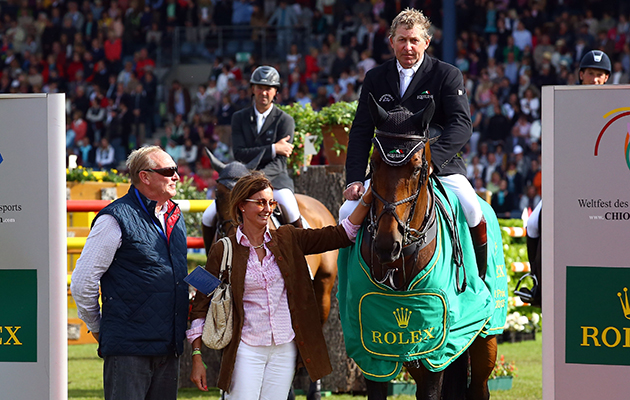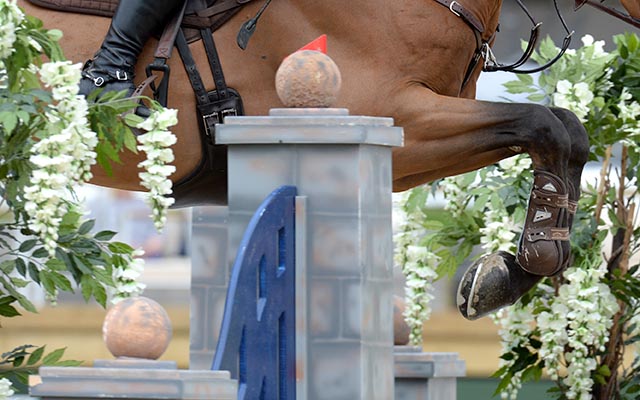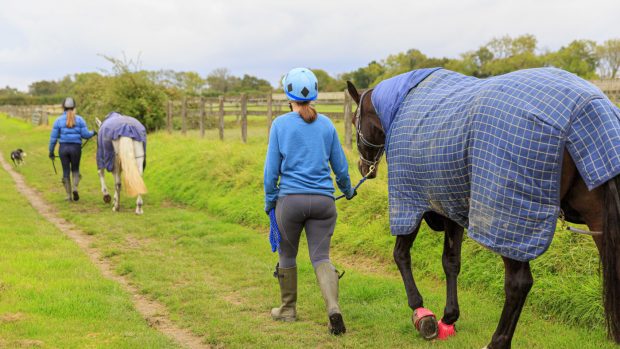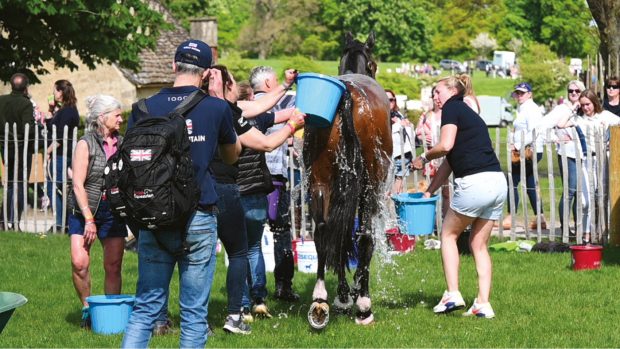The FEI has decided against a proposed rewording of its so-called jumping blood rules that appeared to give stewards more discretion, following consultation with stakeholders.
The FEI is harmonising its rules to some extent, in that the penalty for blood on a horse will now be elimination across all disciplines, where in some sports this had been disqualification. Cases of horse abuse will still result in disqualification.
Disciplines all continue to have their own specific rules regarding blood on a horse.
The early draft of the showjumping rules reworded part of rule 242, to state that combinations would be disqualified for marks and/or blood on the flanks as a result of excessive use of spurs; or marks and/or blood anywhere on the horse as a result of excessive use of the whip. The current rule reads “indicating” rather than “as a result of”.
National federations and stakeholders were consulted, resulting in strongly-worded feedback on the proposed change of language, which in turn resulted in the FEI dropping the proposed tweak in its final draft of rules.
The final proposal of these rules mean that under article 241, blood on the horse’s flank(s) will result in elimination.
Under article 242, marks on the flank(s) indicating excessive use of spurs; and/or marks anywhere on the horse indicating excessive use of the whip will result in disqualification.
These will be voted on at the FEI general assembly on 18 November.
The organisation has also agreed to take another look at spurs — including the shape and size permitted in jumping competitions — ahead of 2019.
Reaction to the first draft
Finland, Spain, Germany, Ireland, Norway, Sweden and the US all voiced strong opposition to the initial change of wording — from “indicating” to “as a result of” — in the first draft of these rules.
The Spanish federation felt it would leave “a lot of room for interpretation” and there would be a “very high risk” of inconsistencies in the way the rule would be applied across different shows.
The German federation stated it “cannot vote for a wishy-washy rule”.
“Any decision taken by an official must be comprehensible and follow precise guidelines, he or she cannot be left alone with it,” stated the German response.
“It has to be clear that athletes must be eliminated whenever there is blood.
“Horse welfare and horsemanship must have utmost priority. We are responsible for the horse, no horse may be harmed and if it happens, we must act.
“We must not forget that we must explain ourselves to the public. This topic is a very emotional one and we are at risk to discredit horse sport’s reputation.”
The Irish federation added it considered the proposed changes to be “ambiguous and subjective”, adding it wants the FEI to be proactive in ensuring stewards and ground jury members have a consistent approach to applying the rule across the board.
Canada and France supported the change of wording.
“Of course excessive use of spurs has to be sanctioned but we do feel that minor blood marks caused unintentionally [by the] athlete’s leg should not be penalised,” stated the French federation.
Focus on prevention
Belgium presented the argument that “much more emphasis” should be given to prevention of blood appearing on horses’ flanks.
“This is paramount to safeguard our sport and to protect the welfare of the horse,” stated the Belgian federation.
It suggested stewards check the horse before he enters the competition arena, and if they find blood, the combination is “withdrawn”. If no blood is seen beforehand, and the ground jury sees no “excessive use of spurs, whip or any other unauthorised behaviour” during the round, but blood is spotted on the way out, it can be ruled to be “accidental”.
The federation added that if the stewards or ground jury spot any cause for concern from a rider’s behaviour, the rider must be eliminated and sanctioned.
“By installing this rule, the ground jury will have the means to intervene in all cases of bad behaviour in the arena and eliminate a rider in such cases,” concluded the Belgian federation.
The International Jumping Riders Club suggested a “yellow card” system, where the rider is given a yellow card for a first case of blood — valid for one or two months — and disqualified on a second offence.
It also stressed the need for finding a clear protocol, that a vet should be part of the decision and recommended a name change to a “spurs rule” rather than “blood rule”.
While Switzerland was opposed to “any softening of the current rule”, it also suggested a rethink of how blood on a horse is policed.
“We think that only injuries created by the rider should be sanctioned,” stated the Swiss federation.
“An option might be to check if there is any blood before the horse goes into the arena. If everything is fine then, the result should count anyway.
“If there is blood when coming out of the arena there could be a punishment with different levels: for example using the existing yellow/red card system.
“For severe cases a sanction of the rider should be considered and enforced. But for cases without a fault of the rider a sanction would not be necessary and too tough.”
Article continues below…
You might also be interested in:
A new name, new introductory level and removal
‘I could have been first or last place
Big Star’s owner snapped up what he hopes

New name for world’s biggest horse trials in rules revamp

‘I did it for Vlad’: watch showjumper compete without a bridle

Two Big Star embryos sold to Britain for £62k
Likewise Norway expressed strong opposition to the rewording, stating it was “not sensible or workable” and also proposed a solution.
“The FEI should be proactive and deal with the source of the problem (spurs) and not keep trying to put a patch over the result of the problem,” stated the Norwegian federation.
“Any relaxing of the current rule would be dangerous and potentially disastrous towards the public.
“Introduction of any subjective assessment would be a nightmare, as it is open to interpretation by different officials.
“It also carries the danger of accusations of bias or unfair influence. To explain why two different officials had made what seem to be conflicting opinions in cases that appear very similar would be impossible.”
It added that a change the rule allowing only blunt spurs would “almost completely remove the problem” and suggests the only spurs allowed should be those already permitted for pony classes.
“Include in the rules exactly the shape of spurs allowed and all manufacturers will quickly adapt to this,” it adds.
For more on the final draft of FEI rules for 2018, don’t miss this week’s Horse & Hound — out Thursday (2 November)




